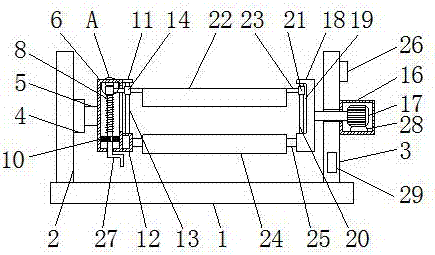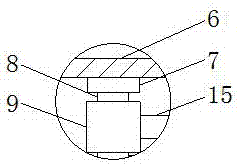Cloth winding device for textile manufacturing machine
A technology of winding device and textile machinery, which is applied in the direction of winding strips, thin material processing, transportation and packaging, etc., which can solve the problems of inconvenient use and inability to adjust the width, and achieve easy arrangement, convenient recording and classification, and increased stability sexual effect
- Summary
- Abstract
- Description
- Claims
- Application Information
AI Technical Summary
Problems solved by technology
Method used
Image
Examples
Embodiment Construction
[0015] The following will clearly and completely describe the technical solutions in the embodiments of the present invention with reference to the accompanying drawings in the embodiments of the present invention. Obviously, the described embodiments are only some, not all, embodiments of the present invention. Based on the embodiments of the present invention, all other embodiments obtained by persons of ordinary skill in the art without making creative efforts belong to the protection scope of the present invention.
[0016] see Figure 1-2 , a cloth winding device for textile machinery, comprising a base 1, the left side and the right side of the top of the base 1 are respectively fixedly connected with a first fixed plate 2 and a second fixed plate 3, and the bottom of the front of the second fixed plate 3 is provided with Label 29, the label 29 is fixedly connected with the second fixed plate 3 through the fixing piece, through the setting of the label 29, it is convenie...
PUM
 Login to View More
Login to View More Abstract
Description
Claims
Application Information
 Login to View More
Login to View More - R&D
- Intellectual Property
- Life Sciences
- Materials
- Tech Scout
- Unparalleled Data Quality
- Higher Quality Content
- 60% Fewer Hallucinations
Browse by: Latest US Patents, China's latest patents, Technical Efficacy Thesaurus, Application Domain, Technology Topic, Popular Technical Reports.
© 2025 PatSnap. All rights reserved.Legal|Privacy policy|Modern Slavery Act Transparency Statement|Sitemap|About US| Contact US: help@patsnap.com


